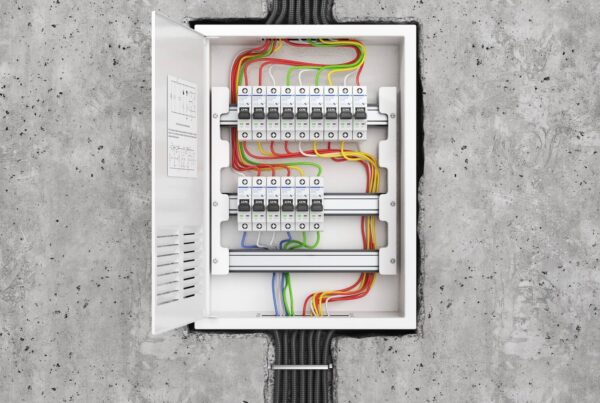
The importance of electrical safety can’t be overstated, whether you’re at home or work. You might have heard of GFI and GFCI outlets, which help prevent electric shocks and fires. The terms are frequently used interchangeably, but understanding the differences between various outlets is one of the best ways to stay safe. In this article, we’ll explore GFI vs GFCI outlets and why it matters.
Plus, we’ll send you on your way with tips on how to keep them working right. By the time we wrap up, you’ll know what to do to make any space safer for everyone.
Why it Matters
More than just electrical trivia, knowing the basics of these devices helps in preventing electrical shocks and fires. A solid understanding of where they belong and how to test them helps ensure code compliance and safety.
Also, identifying which type of outlet you have can be valuable when troubleshooting or maintaining many electrical components. This familiarity prepares you to handle any minor issues that may arise. It also will clarify when it’s time to call an expert.

A standard outlet that has visible burns following a short circuit.
GFI vs GFCI Outlets
Let’s start with a look at GFI – a Ground Fault Interrupter is a device designed to protect against electrical shocks.
It works by constantly monitoring the flow of electricity through a circuit and quickly shutting off power if it detects an imbalance, which could indicate a ground fault. This helps prevent any harm if someone comes into contact with a faulty appliance or exposed wiring.
GFI outlets are common in older homes and in areas where electrical hazards are more likely to occur. Think of places like kitchens, bathrooms, and outdoor spaces. While they provide a good level of protection, you’ll come across them less frequently in recent years.
GFCI
A Ground Fault Circuit Interrupter (GFCI) is a more advanced version of the GFI. Like its predecessor, a GFCI outlet monitors the flow of electricity and trips the circuit if it detects a ground fault. However, GFCIs are more sensitive and responsive than GFIs, providing even greater protection.
GFCI outlets are part of modern building code requirements in many areas. Particularly, locations where water and electricity are likely to come into proximity. Just like GFI outlets, these include areas like kitchens, bathrooms, laundry rooms, and outdoor outlets. If your home is newer than the 1970s or had significant renovations, you probably have GFCI outlets in these areas.
How to Test and Reset GFI and GFCI Outlets
To ensure your GFI and GFCI outlets are functioning properly, it’s essential to test them regularly. Here’s how:
1)Press the “TEST” button on the outlet. This should cause the “RESET” button to pop out, indicating that the outlet has tripped.
2) If the “RESET” button does not pop out when you press “TEST,” the outlet is not functioning properly. A qualified electrician should handle the replacement!
3) If the outlet does trip, press the “RESET” button to restore power. If the outlet fails to reset or trips again immediately, there may be a more serious issue that requires professional attention.
Aim to test your GFI and GFCI outlets at least once a month to ensure they’re always ready to protect you and your property.

Other Recommended Maintenance
In addition to regular testing, there are a few other steps you can take to maintain electrical safety:
- Keep electrical outlets and devices clean and dry, as moisture can create a fire hazard or increase the risk of electrical shocks.
- Schedule periodic inspections of your electrical wiring and outlets by a licensed electrician to identify any potential issues before they become serious problems.
- Avoid overloading outlets or using extension cords as permanent solutions, as this can lead to overheating and increase the risk of fire.
When to Call a Professional
For installing, replacing, or dealing with frequently tripping outlets that fail to reset, get a professional. They have the knowledge and tools to diagnose and repair any underlying issues. Plus, they can handle it quickly, safely, and in compliance with local building codes.
Additionally, if you’re ever unsure about any aspect of your electrical system or feel uncomfortable working with electricity, don’t hesitate to call in an expert. Electrical safety is not an area where you want to take chances or cut corners!
Conclusion
In essence, there’s not too much that differentiates GFI vs GFCI outlets. Both play a critical role in keeping a home or workplace safe from electrical hazards, but GFCI is the newer, more responsive version of the two.
Also, they’re only effective if they’re maintained properly! Regular testing, proper maintenance, and knowing when to call in a professional are all essential components of electrical safety. If you have questions or concerns about your home’s electrical or other systems, call Boggs Inspection Services in Olympia, WA, and surrounding areas.



